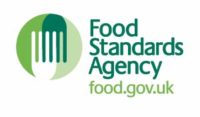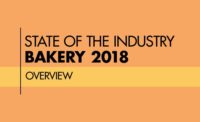Leading food industry chief executive officers (CEOs) and their staff know that their foremost challenge and focus is to provide safe food and protect the consumer. The next challenge is to protect their brand and make their business as successful as possible.
Deloitte & Touche LLP’s recently expanded 2011 Consumer Food and Product Insights Survey clearly highlights how consumers watch for recalls and defective product information involving anything they may bring into their home. From spinach and peanut butter to cribs and bisphenol A-laden plastics, several safety and recall stories have filled television screens and hit close to home over the past few years. Thus, perhaps unsurprisingly, 73% of respondents in the survey reported that they are more concerned now than 5 years ago about the food we eat—up from 65% in 2010.
The good news is that half of respondents indicate that they have not seen an increase from last year in recalls on food (50% think that these recalls have stayed the same). However, when it comes to the responsibility for communicating these recalls, the results suggest that there may be a movement underway. Consumers are looking for checks and balances in the information they receive and insisting on a greater level of transparency about the safety, ingredients and origin of products. In the process, they are turning to consumer groups and peers as trusted sources. Consumer products companies should get ahead of this shift and work more directly with consumers and consumer groups to build brand advocates and stronger customer relationships.
From a safety perspective, recent cases of contaminated food products and widespread recalls have resulted in a growing awareness of the foods that reach America’s tables.[1] Increased media attention associated with recalls related to foodborne illness outbreaks has consumers more sensitized. As a result, food safety has become a critical area of concern for consumers, regulators and the companies whose success depends on consumer confidence. From increased regulations and heightened public awareness to growing consumer unease with threats against the food supply and everyday products, companies cannot risk ignoring this important challenge.[2]
Companies are seizing the opportunity to turn this concern into a competitive advantage by adopting a risk intelligent culture across the extended enterprise and marketing this approach to enhance consumer brand loyalty and product visibility. For many companies, there is a growing urgency to do all they can to address the problem head-on.
The risk of today’s consumers dropping a product if they believe the company is not doing what it takes to protect them and their families is not something to take lightly. The challenge is clear—focusing on food safety programs that protect your brand and your consumers is not an option; it is a key to survival.
Corporate culture is extremely important when it comes to food safety. Leading food companies work continuously to ensure their food safety culture extends from the CEO all the way down to the production line worker. The culture must be evident everyday and be “known and practiced” thoroughly by ALL members of the company. It must be reinforced through continuous training and reassessment of current food safety practices to capture and institutionalize the culture throughout the company’s supply chain.
The risk is too high to “assume” an ingredient from a supplier is always safe or that the supplier to the supplier of his supplier has an effective, verified and validated food safety system in place. A leading company must know to what degree its people are consistently executing the company’s food safety policies, from procurement through final distribution.
The food industry must continue to take responsibility for what it can control and not rely on, or expect, regulators to find the gaps in the process—be it one’s company or that of a supplier, distributor or retailer.
The key question for any CEO engaged in producing food is “Am I prepared to feed this product to my children every day?”
A leading company will be proactive, empower its people and employ an active management and continuous improvement process throughout all parts of its supply chain to ensure that safe, high-quality products reach the marketplace while meeting consumer expectations.
With the advent of the new 2011 Food Safety Modernization Act (FSMA), the cost of producing safe product is increasing for each stakeholder in the food industry. However, that incremental cost is small compared to the value of one individual made ill or lost due to unsafe food or handling practices. Increased consumer confidence and repeat business is paramount and provides the catalyst for new business and products.
Regulators play an instrumental role to ensure industry compliance with existing food safety regulations. As new laws are anticipated, regulators must be prepared to enforce existing regulations in a swift and decisive manner. They must preclude purveyors of unsafe product from jeopardizing the health of the American public.
Motivating Factors for Food Safety Investment
William D. Marler, Esq., a well-known foodborne illness litigation lawyer, addressed the House of Lords in London in May of 2009.3 An excerpt from his recollection of the recent Peanut Corporation of America recall was quite telling and provides an economic motivation for focusing on food safety. Mr. Marler quickly captures key economic parameters that are associated with this recall and are now quite apparent to most CEOs.
“...Let’s start with the human toll, which is what I know best. My firm represents over 100 people who were sickened by the Salmonella and two families who lost a family member to it.
“...Recalling tainted food is the right thing to do—for legal and ethical reasons as well as basic public relations. But recalls come with astounding costs. One of my good friends in the food processing industry estimates that the peanut recall will cost well over $500 million. It’s impossible to assign precise numbers, but you can start with the costs of tracking down, retrieving and transporting millions of items, most of which have already found their way onto retail shelves and kitchen cabinets.
“...Then there are the lost sales—not just of the tainted products themselves, but also of related peanut products that may be completely safe. The tomato-Salmonella recall last year resulted in $100 million in lost tomato sales—even though the real culprit proved to be peppers. In 2006, E. coli-tainted spinach cost that industry over $175 million—even though the outbreak was linked to just one 50-acre farm in California.
“...Let’s not forget the costs of advertising and public relations aimed at restoring consumer confidence.
“...And, then there are the losses to stock prices. One major food processor lost $1 billion in stock value following an E. coli outbreak.
“...Is anyone keeping track of the math? Let’s call it $1.5 billion—just because of the actions of one small player in the peanut industry. The likely costs of compensating their sickened customers are a tiny part of that number; virtually none of the rest of that $1.5 billion will be covered by insurance.”
From a regulatory point of view, Mike Taylor J.D., Deputy Commissioner for Foods, U.S. Food and Drug Administration (FDA) in a 2010 public address stated the following:[4]
“We want to really learn from the community what are the best practices out there, and how can our standards reflect the best practices that have been demonstrated to be capable of being implemented in practice?”
In this statement, FDA is reaching out to the industry to work in partnership to define the “leading practices” to ensure food safety.
“We won’t ever be able to, or aspire to, go to the hundreds of thousands of farms that are growing produce. This is going to take a community effort to get to where we need to be in terms of prevention.”
With the passage of the FSMA, FDA now has new mandates and more authority to “stimulate” the food safety industry. All stakeholders have an opportunity to pull together and help FDA define the most practical and effective regulations based on science and lessons learned. Food safety managers need the support of their CEO and top management teams to identify program gaps and implement more effective preventive controls. By taking a proactive approach in anticipation of new regulations and performance standards, each part of the supply chain will have more time to properly train and implement changes throughout their own supply chain in support of their food safety culture.
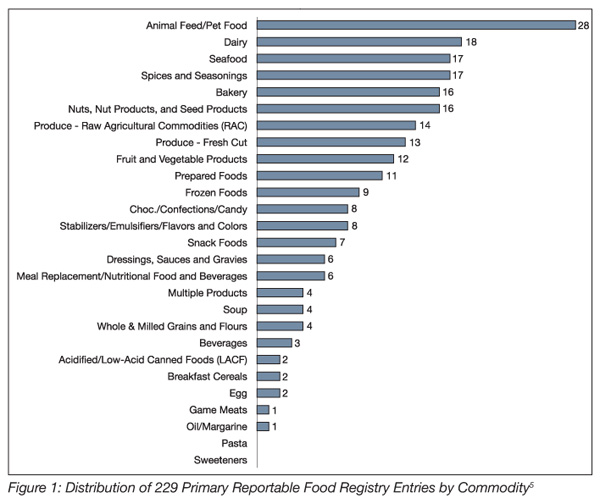 With the establishment of the FDA Reportable Food Registry, virtually all parts of the food supply chain are involved with timely reporting of food safety hazards. A review of what has been reported to date can provide us with a snapshot of some of the major issues that are arising in our food safety system. FDA just released their Reportable Food Registry Annual Report and Figures 1 and 2[5] clearly show a wide array of products reported, with Salmonella and undeclared allergens being the top two hazards.
With the establishment of the FDA Reportable Food Registry, virtually all parts of the food supply chain are involved with timely reporting of food safety hazards. A review of what has been reported to date can provide us with a snapshot of some of the major issues that are arising in our food safety system. FDA just released their Reportable Food Registry Annual Report and Figures 1 and 2[5] clearly show a wide array of products reported, with Salmonella and undeclared allergens being the top two hazards.
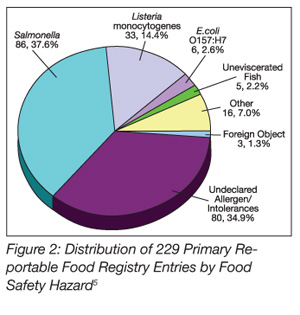
The Path Forward
Preparing for and responding to the various parts of the FSMA will involve subject matter specialists and the food industry at large, not only in the U.S. but globally. Everyone benefits when wholesome, quality food is properly managed all the way through the supply chain, including retail establishments and restaurants. The states and their local health departments play crucial roles in advancing food safety down to the consumer. They also play critical roles in the study of foodborne disease and assist in defining the cause and removing it from the marketplace. A broader adoption of the Food Code would be beneficial to everyone, especially the consumer. Mr. Taylor states the following:[4]
“FDA has a long history of working with states through the Food Code, promoting the Food Code as a model ordinance for states and localities to adopt and enforce. A lot of good has been done through the Food Code cooperative program approach.”
This is a leading practice that still has a way to go before a more harmonized food safety oversight system is in place across the entire U.S.
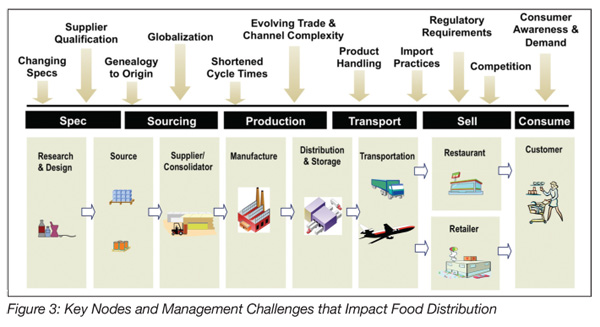 The food industry must closely evaluate its extended supply chain to determine where food safety gaps exist and to determine the best approach to fill them. The supply chain is quite large with multiple nodes. Figure 3 provides an illustrative view of some key nodes of the supply chain, as well as key management challenges impacting food distribution.
The food industry must closely evaluate its extended supply chain to determine where food safety gaps exist and to determine the best approach to fill them. The supply chain is quite large with multiple nodes. Figure 3 provides an illustrative view of some key nodes of the supply chain, as well as key management challenges impacting food distribution.
A comprehensive strategy to embrace the supply chain and develop a world-class food safety program involves three discrete activities:
1. Assess: Assess the company’s capabilities for preventing and responding to food safety threats. This phase allows a company to benchmark itself against leading practices in food safety. Even companies with mature food safety programs can benefit from a comprehensive assessment, which identifies capability gaps and helps set priorities for improvement. Once the improvement opportunities have been prioritized, a roadmap for change can be developed.
2. Build: Build the governance, skills and systems to improve food safety capabilities. During this phase, the company executes the roadmap. Typical improvement activities include: developing appropriate leadership support for food safety, elevating food safety objectives to the corporate level, implementing new processes and systems to align with leading practices and training key resources to support these changes.
3. Monitor: Monitor risks and trends on a regular basis, adjusting the food safety program to address significant changes. In this phase, the company assesses and improves the effectiveness of its food safety program on an ongoing basis. As new threats to food safety emerge—and as leading practices, standards and regulatory requirements evolve—the company adjusts its food safety program to address these changes.
 One must take time to closely assess regulatory compliance, total management systems, corporate policies, standards, training programs, second- and third-party audit programs and traceability. Figure 4 exemplifies how the application of a diagnostic tool can assess the supply chain maturity level. Management can then determine what must be done to make that particular node a “core value” program.
One must take time to closely assess regulatory compliance, total management systems, corporate policies, standards, training programs, second- and third-party audit programs and traceability. Figure 4 exemplifies how the application of a diagnostic tool can assess the supply chain maturity level. Management can then determine what must be done to make that particular node a “core value” program.
The following recommendations may help proactive companies identify potential gaps in food safety systems and implement improvements:
• Make food safety a top management priority
• Define a vision for improving the organization’s food safety capabilities
• Hire the right people and leverage leading practices
• Improve processes for crisis and incident management
• Establish an effective performance measurement framework
An ongoing monitoring process helps ensure a consistent level of performance and is critical for developing and improving an institution’s food safety capabilities.
Specific benefits:
• Meet regulatory requirements and industry standards for transparency and reporting
• Reduce operational risk and annual losses
• Provide a risk framework to support improved decision making
• Benchmark compliance requirements against risks and performance goals
• Provide insight about the true risk profile for individual organizations and functions
• Reduce redundancy in risk management and compliance activities
• Enhance communication and assurance across the extended enterprise
As a company begins to address specific parts of the FSMA, it should consider the following suggestions:
• Reassess the corporate food safety culture from top management down to the line worker and confirm it is properly supported with financial and human resources, including training
• Know how facility food safety and registration records are managed, accessed and reviewed for regulatory and corporate compliance
• Take a proactive approach with the regulatory agency with jurisdiction over company facilities to ensure transparent and clear communications
• Take time to meet with federal and state regulatory recall managers and share how the company manages recalls as well as how the food safety systems are managed
• Confirm the registration of all facilities subject to the FSMA and know who has the registration numbers and password access to the federal registration record
• Track facility registrations and re-registrations reported to the primary person responsible for ongoing compliance and protection of registration numbers as well as the designated secondary “backup” person
• Reconvene the company’s food safety team and reassess all hazards across the food safety system, upstream and downstream, including intentional and non-intentional adulteration risks
• Assess or reassess facility risk, based on the criteria outlined in the FSMA. Internal, as well as third-party facilities, both domestic and foreign, should be included in the assessment to fully understand the risks in the supply chain.
• Utilize subject matter specialists to characterize all products and facilities as being high or low risk.
• Closely review regulatory enforcement actions taken in the past 12 months for all facilities within the company, including subsidiaries and the effectiveness of the corrective actions implemented.
Value for the Company
The value of a thorough and regular review of all food safety programs using internal and external subject matter specialists can support the effectiveness of each part of the company’s food safety system and will protect consumers as well as the corporate brand. Such an approach may help companies more quickly identify potential problems that could introduce a hazardous or non-compliant product into the marketplace. It may also enable the organization to prevent personal injury to the consumer; ward off subsequent regulatory, criminal and civil litigation; avert costly mediation; protect the organization’s brand image; and—ultimately—instill consumer confidence in the safety of the company’s product line.
Pat Conroy is vice chairman and U.S. Consumer Products leader at Deloitte LLP.
Frank Oehl is a partner and the U.S. Food & Product Safety lead for Deloitte & Touche LLP.
Craig Henry, Ph.D., is a director in the U.S. Food & Product Safety practice of Deloitte & Touche LLP.
This article contains general information only and Deloitte is not rendering professional advice or services. In addition, this article contains the results of a survey conducted by Deloitte. The information obtained was not validated or confirmed by Deloitte. Deloitte, its affiliates and related entities shall not be responsible for any loss sustained by any person who relies on this article.
References
1. www.deloitte.com/assets/Dcom-UnitedStates/Local%20Assets/Documents/Consumer%20Business/us_cp_2010FoodSurveyResults_050310.pdf.
2. www.deloitte.com/view/en_US/us/Industries/consumer-products/1912cf06d7c38210VgnVCM100000ba42f00aRCRD.htm.
3. www.marlerblog.com/lawyer-oped/william-d-marler-esquire---speech-before-the-house-of-lords-dinner---how-one-peanut-company-caused-1.
4. www.fda.gov/AboutFDA/CentersOffices/OC/OfficeofFoods/ucm211567.htm.
5. www.fda.gov/Food/FoodSafety/FoodSafetyPrograms/RFR/ucm200958.htm#fig7.
SIDEBAR
Tips for Finding a Food Safety Consultant for Your Business
Are you trying to solve a complex problem, initiate an improvement project or are considering moving into a market where your team lacks experience or depth of knowledge? Given organizational changes through downsizing, retirements or rapid promotions, could your team benefit from gaining insights and perspectives from someone with experience? Or do you, as a key leader, desire to have a trusted person with whom you can be open, test concepts and add ideas, while receiving candid and personal feedback?
When these situations arise, leaders generally recognize that it is time to seek help from outside the organization and call in a consultant. The task of a consultant is to listen, understand your needs, ask questions, provide structure to the effort and provide input on how to get work done. They should be able to help you expedite the process, making it as painless and productive as possible. When you decide it’s time to approach a consultant, use these tips to find the ideal candidate.
Proven Experience – You should hire a firm or an individual that has real-world experience and a track record of successful problem solving. They should have broad understanding, capabilities and skills. A consultant with a variety of proficiencies can lead to new and alternative insights. Depending on your needs, be cautious about hiring former employees. While they may know the culture and organization, they may not bring an unbiased thought process or provide honest insight. Finally, check their references.
Assertive and Focused – A good consultant has a realistic mindset and sets practical and achievable goals. They should be able to guide the project, keeping everyone on task and moving toward a goal. Set 30-, 60- and 90-day goals and deliverables to affirm things are on track. The consultant must also be willing to provide honest feedback, not the answers they think you want to hear. If your consultant never offers a contrarian view to test the soundness of the logic, you are not getting value.
Industry Knowledge – While you may prefer your consultant to have knowledge about your industry, depending on the need, do not automatically dismiss them from consideration if they do not. Exposure to a variety of sectors and experiences may actually be very valuable to your operation. If the consultant displays an ability to rapidly grasp the ins and outs of your industry, they should be able to effectively apply their knowledge to your business situation.
Collaborative and Engaging – Consultants who are skilled at interacting with others can often work with and secure the support of customers or employees within the company better than management.
Once you have selected your consultant, start with identifying the problems, needs or opportunities. Communicate clearly your expectations and desired outcomes. Following these steps raises the likelihood that your consultant will
deliver value.
–Tony Arnold is the current principal of Upfront Management
Food Safety: Top Concern of Food Industry CEOs


